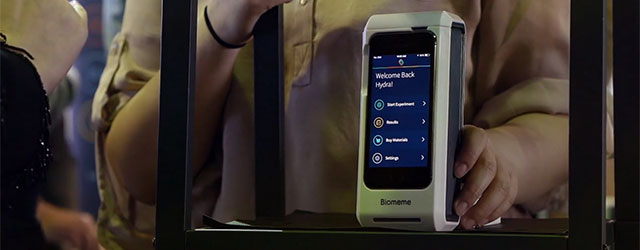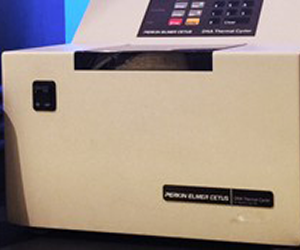Home Ebola testing with a Tricorder? There's an app for that
DNA-testing peripherals for smartphones are here. And DNA can change your day.
Last year, if you’d walked off a flight from West Africa running a high fever, you’d very quickly find yourself quarantined to test for the Ebola virus. The length of your stay in quarantine would depend on how long it took to run the required tests.
A genetic test remains the gold standard for infectious agents. Every bacteria and every virus has its own genetic signature, like a fingerprint. Genetic tests can also discriminate between the various strains of a bug – less lethal versus more lethal versus zombie apocalypse.
But genetic testing is neither fast nor cheap. So your stay in quarantine could be lengthy while you wait for a sample to traverse meatspace. And longer still if a courier mislays something.
This year, if you walk off a flight from Brazil running a fever, you’ll quickly find yourself in quarantine, as public health officials do what they can to stem the spread of the Zika virus, believed to be the cause of a recent increase in infant microcephaly.
But you might only find yourself in quarantine for a few minutes.
The reason for this is the transition to fast, on-demand genetic testing delivered by an iPhone peripheral that looks a bit like a Bluetooth speaker. Pop the top open, inject the samples into the specimen containers, and a rapid PCR (polymerase chain reaction, since you asked) process clones the DNA thousands of times, shooting various lasers through it. The reflection or absorption of those beams tells you what bug you’re hosting.
Within two minutes, your iPhone – connected via Bluetooth to the control electronics – gets a reading, which it then processes and measures against the expected results, rendering a verdict: infected or clean.
Welcome to the era of smartphone-powered pathology.
We’ve already seen how the smartphone can replace the expensive dedicated computer in a 3D scanner and do a better job at a far lower cost. That’s now happening to the full range of medical and clinical devices, as the smartphone becomes the brains behind a revolution in accessibility and price. The expensive machine that goes ‘ping!’ has become the smartphone that surfs Bing.
The company that engineered the handheld genetic tester – Biomeme – immediately set to work on the most important tests: Ebola, Zika, and Malaria. Governments around the world have queued up to use their tech, because a quick diagnosis is cheaper (and substantially easier) than the alternative. But that’s just the beginning of what’s possible.
At a few thousand dollars, Biomeme’s analyser isn’t the kind of thing you’d find in an average home. Nor, thankfully, is there much demand for a home Ebola test. But there’s many more bugs that aren’t killers. As we learn more about bacteria, we have come to understand they are integral to our health.
There’s lately been a lot of research into the human ‘microbiome’, that combination of gut and skin flora symbiotically cohabiting with us throughout the course of our lives. We know they’re around, but we don’t know very much about them – because it’s difficult to sample our microbiome. Tests are slow and expensive.
Read the full article here.





